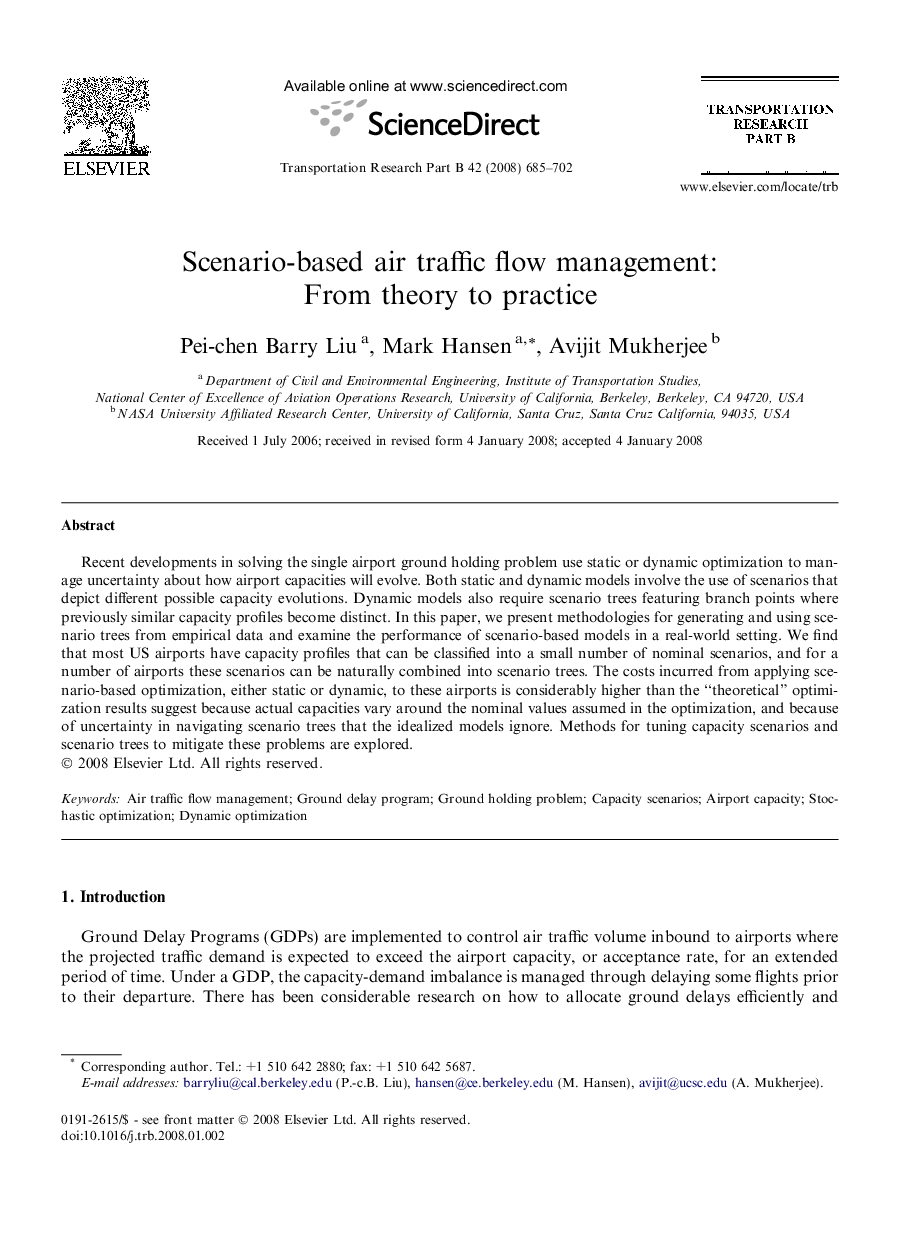| Article ID | Journal | Published Year | Pages | File Type |
|---|---|---|---|---|
| 1132830 | Transportation Research Part B: Methodological | 2008 | 18 Pages |
Recent developments in solving the single airport ground holding problem use static or dynamic optimization to manage uncertainty about how airport capacities will evolve. Both static and dynamic models involve the use of scenarios that depict different possible capacity evolutions. Dynamic models also require scenario trees featuring branch points where previously similar capacity profiles become distinct. In this paper, we present methodologies for generating and using scenario trees from empirical data and examine the performance of scenario-based models in a real-world setting. We find that most US airports have capacity profiles that can be classified into a small number of nominal scenarios, and for a number of airports these scenarios can be naturally combined into scenario trees. The costs incurred from applying scenario-based optimization, either static or dynamic, to these airports is considerably higher than the “theoretical” optimization results suggest because actual capacities vary around the nominal values assumed in the optimization, and because of uncertainty in navigating scenario trees that the idealized models ignore. Methods for tuning capacity scenarios and scenario trees to mitigate these problems are explored.
